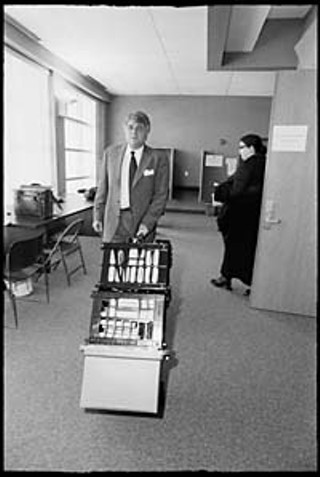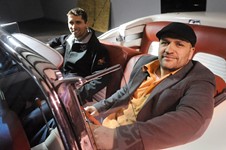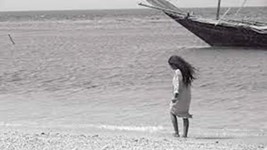Naked City
True Confession?
By Jordan Smith, Fri., May 18, 2001

It was intensely quiet on Tuesday in the 167th District Court, presided over by state District Judge Mike Lynch. On the second day of the first full week of testimony in the capital murder trial of Robert Springsteen IV, jurors spent the entire day watching a five-hour videotape of an interview Austin Police Department detectives conducted with Springsteen in September 1999.
Springsteen, 27, is the first of three defendants -- the others are Maurice Pierce, 25, and Michael Scott, 27 -- to stand trial for the murders of four teenage girls at a North Austin yogurt shop in 1991. Eliza Thomas, 17, sisters Sarah and Jennifer Harbison, 15 and 17, and Amy Ayers, 13, were found murdered in the store on Dec. 6, 1991, after a passing patrol officer noticed that the building was on fire.
The 1999 interview was the third time APD detectives had interrogated Springsteen, and the third time Springsteen had adamantly denied any involvement in the crime. During the 1999 interview, Springsteen told APD Detectives Robert Merrill and Ron Lara that he was at Northcross Mall the night of Dec. 6, 1991, with Pierce, Scott, and Forrest Welborn, but that he was "never, ever" in the yogurt shop just down Anderson Lane from the mall. In fact, Springsteen said repeatedly, he had gone to see The Rocky Horror Picture Show that evening, as he did nearly every weekend. "We need to clear this up," Merrill says on the tape, his chair blocking the only exit in the small interrogation room. "There's no doubt in my mind you were there."
However, after the detectives spent nearly three and a half hours accusing Springsteen of lying, telling him his friends said he was involved in the murders, and that Rocky Horror Picture Show wasn't even playing that Friday night, Springsteen changed his story, saying he shot and raped 13-year-old Amy Ayers. Yet jurors were left with one question: Was he really there? "I think the thing speaks for itself," said Springsteen's attorney Joe James Sawyer. "We will visit that statement part by part."
It comes as little surprise that police officers lie to suspects during interrogations; the practice is perfectly legal, provided they don't actually lie about the law. And in this case, the detectives lied about quite a few things. They claimed that all of Springsteen's friends had implicated him in the crime (they had not); that there were other people who saw him at the yogurt shop that night (they had no witnesses); that Rocky Horror Picture Show was not playing that night (it was); and that they had DNA evidence linking Springsteen to the crime (they do not). Still, after nearly half a day in the corner of a small room in the police station in Charleston, W. Va., where he lived -- and after telling police he would willingly submit to a lie detector test or even hypnosis -- Springsteen said he did take part in the crime. "I don't know whether this is true or not, or whether I'm fooling myself," Springsteen said. "I'm so confused. … "
The prosecution has no physical evidence at all linking Springsteen -- or the other defendants, for that matter -- to the crime, a fact that was painfully obvious at the conclusion of the first week of the trial. Assistant District Attorneys Robert Smith, Darla Davis, and Efraim de La Fuente spent the first four days in the courtroom displaying photos to illustrate the gruesome nature of the crime: Four girls stripped, gagged, shot in the head, and then burned -- charred to the bone in places -- in a fire that, investigators said, was set in an attempt to cover up the crime. Family members were in tears (as was one juror), and many jurors covered their mouths and crossed their arms as if in defense against the visual horrors.
Still, evidence collected at the scene, and tested at the Dept. of Public Safety crime lab, yielded no physical evidence -- not one fiber, not one speck of DNA -- linking any of the suspects to the murders. Six fingerprints were recovered from the lid of a cash register drawer found near Ayers' body, and were sent to the FBI in Washington, D.C., for analysis, along with prints from the four girls, the four boys, and all the yogurt shop employees. But FBI fingerprint specialist Thomas Trozzi was able to identify only two of the prints as being those of an employee; the remaining four did not match any of the others he was given, he testified. To add to the troubles, fire experts -- Austin Fire Dept. investigators as well as an expert from the Bureau of Alcohol, Tobacco and Firearms -- were unable to say definitively how or where the fire started. The flames, they said, reached at least 1,200 degrees, burning away the top of an aluminum ladder but leaving the painted cement floor -- where the girls' bodies were found -- virtually unscathed.
Part of the trouble with collecting evidence, witnesses testified, was that more than a dozen people tromped through the store before it was cordoned off by the APD. Since it was initially reported as a fire emergency, AFD responded first. It was only after the fire was out that the department realized there were bodies inside, firefighters testified. Indeed, in several photos of the slain girls, firefighters can be seen standing around in the background.
What the state does have is the videotape of Springsteen, regardless of the conditions under his confession was obtained. And that is, legally, enough to convict him, however paltry the other evidence against him.
Got something to say on the subject? Send a letter to the editor.








